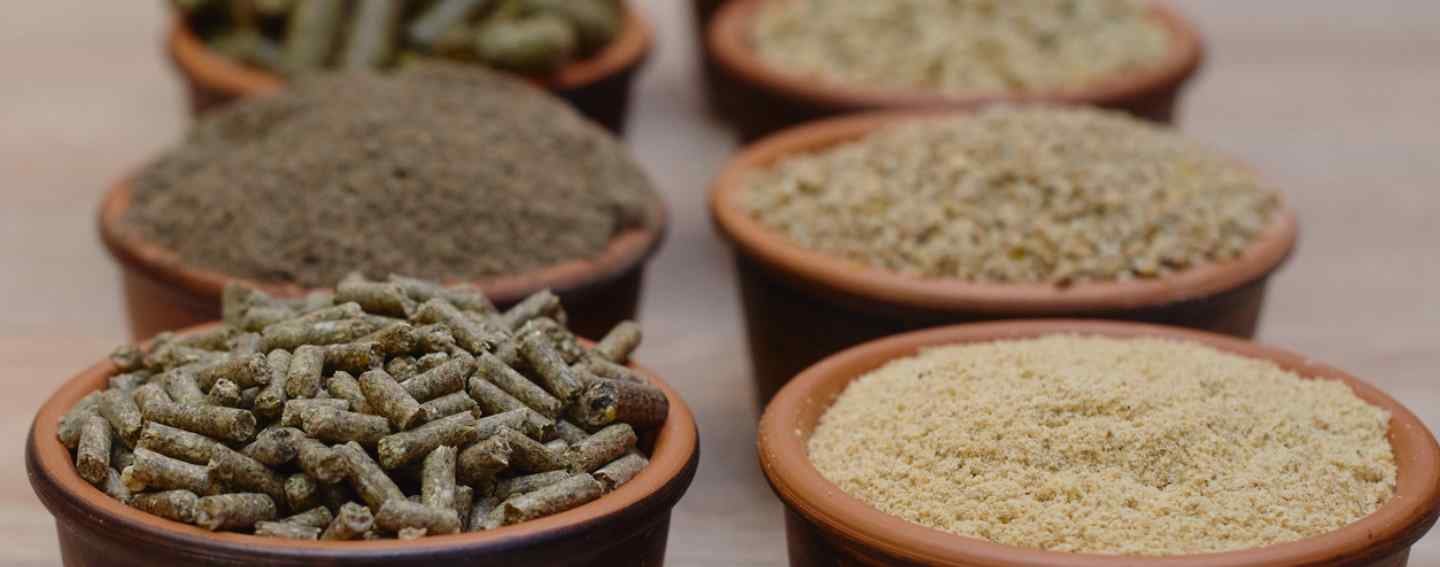
Food suppliers like poultry and swine farmers, who are key customers of major agri commodity participants, are having to embrace the digitalization wave that is sweeping across global commodities and industrial sectors. HC Insider talks to Mike Bedford, Research Director for global animal nutrition company AB Vista, who runs programs for the development of new enzymes and nutrients used by livestock farmers. Here, he explains how transformative – if not disruptive - new technologies have been for animal feed businesses and their talent strategies.
How is your research commissioned?
Mike Bedford: Most of our research is contracted out to universities or to research organizations which help to develop our products and bring them to market. A smaller part of my work consists in collaborating with customers to test our products with them and hopefully show that our products work under their conditions.
We interact with the nutritionist within the client’s organization, who is involved in finding new solutions to feed the animal. He or she has contacts with the vets and the live animal production managers.
We ourselves collect and analyze all the data that we can regarding our products to learn how best to use them and predict the scale of response expected. So, for example, we have products for which we might have conducted 200 animal trials. This gives one big dataset. We tease out from that dataset the factors which influence whether we get a big or small response from our product.
In some cases, we gain insight into factors (dietary, husbandry, etc.) which impact the response. In some cases, we may not have ever conducted a trial to specifically investigate these factors directly. This is what we call post-hoc holo-analyses. You learn things that you really would not pick up from any of the individual trials.
How is your research and the way you deliver your solutions impacted by digitalization?
MB: The way we are impacted has more to do with how our research is involved with the universities that are using digitalization, automation, artificial intelligence (AI) and machine learning to unravel what is going on in the animal. For instance, we are talking about DNA-related technologies, amongst others, when working in partnership with some of our customers. Such technologies are heavily reliant on digitalization.
There is a potential opportunity where digitalization could produce tools that we could take to the market, like biomarkers (or compounds found in litter, faeces, or blood), which could be useful to the customers and for us in determining if a problem may be “brewing” and we can then offer advice on what to change in terms of additives or ingredients in the feed.
What are you seeing in the wider industry in terms of the effects of digitalization and automation?
MB: Some customers are very open to digitalization and new tools. Others are very conservative and are waiting to see how this trend pans out before they invest. Some of the leaders in the market are starting to look at how you improve animal production profiles by monitoring performance on a flock or even real-time basis by placing in-barn cameras to monitor chickens (with new camera technologies like infra-red or regular cameras). These are used to estimate the body weight of birds. They can also get data on real-time water consumption, or on gases that are produced in the barns. It’s not just to monitor the performance of the animal but also to identify possible problems through behavioral change which might indicate the onset of disease.
It takes a lot of time to understand how to apply university knowledge to the industry and pick up on those disciplines relevant for commercial animal production, which can include feed formulation, ingredient analysis as well as physiology, microbiology, nutrition, immunology and all the disciplines that are involved in animal production.
How disruptive has digitalization been in the animal feed industry?
MB: There's a stimulus that is required to start making an individual embrace technology and digitalization and make use of it as there is a considerable investment needed in equipment, expertise, and ultimately, in time before any value is extracted. Nevertheless, there are a few companies that are now collecting all their data and digitalizing it regarding all the production data on their flocks including data related to behavior. They use machine learning and sophisticated statistical techniques to identify correlations of interest between variables, etc.
When we started doing holo-analysis on our own data, it was apparent that some customers were interested in this approach. Although we were initially running such analysis on their flock data, many quickly realized the value and have subsequently invested in doing such analysis on their own. We do keep in touch with some of these companies and compare approaches, but for the most part they work on their own now.
Can you give specific examples of the challenges caused by digitalization?
MB: One potential problem with digitalization is that some technologies, which are very hard to use and need experts today, will be automated tomorrow. If we invest too much in the current technologies and try to offer that to customers as a service, we might be replaced in five years’ time by an advancement of that service that will become so easy to use that anybody can do it. Careful consideration must therefore be given to identify exactly what we are delivering for the customer. If it is expertise which is not easily digitized and replaced then we can provide long-term value, if not then we need to be cautious.
One of the biggest problems that most people face when they're trying to digitize and bring all their information together, is that there is a lot of data. It's often not in the same format, or in different databases, some of it is in excel, some as CSV text files, etc. It’s not a simple job to access different databases and to make sure that you integrate the data that is relevant from one database to that of another – for example aligning dietary information from the feed mill with that of performance data from the grower. Some software developers like JMP have made it a lot easier than it was ten years ago when we were doing this manually.
How is digitalization impacting talent strategies?
MB: Data is seen as power. In the past, the customer was open to sharing the data with external consultants. They’re not doing it anymore and for good reasons. The trick is having people who are skilled to use that data to maximum advantage.
We were doing similar things on different datasets. We could leverage our skillsets. The problem is that we would spend a lot of money getting that skillset up to speed with all the formats and types of data that differ between customers. The aim was to do this in volume enough so that we can operate as a service for many customers. For large companies, as noted above, it is often more beneficial for the customer to do the work themselves through hiring an in-house data scientist.
While looking at the current technology, ask yourself what will be there in five years’ time. How much easier might it be with evolved tools and software, and will you still need an expert to do it?
There is a missing generation in the farming industry with a mid-level talent gap between junior employees and more senior talent who are preparing for retirement and will need to be replaced. What challenge does this create?
MB: Our industry is still very much relationship driven. It is a small market. If you want to reach 80% of this industry across the world, you probably only need to know about 500 contacts across the industry.
It takes a long time for people to build trust. As a result, it's not easy to get someone started into a new position and get them to generate the same relationships with the customer as maybe someone of my generation already has – it will take time.
Another interesting point is that university students still need a lot of ‘on-the-job’ training when they enter the feed industry. It takes a lot of time to understand how to apply their university knowledge into the industry and pick up on those disciplines relevant for commercial animal production which can include feed formulation, ingredient analysis as well as physiology, microbiology, nutrition, immunology and all the disciplines that are involved in animal production. Once you can start to contribute, then customers may start getting close to you and will want to talk to you.
Do you think digitalization can create more competition?
MB: In some cases, it doesn’t matter what products you’re launching because the relationship between the customer and your competitors can be so strong, it limits your chances of success.
But if the data and metrics behind the product is extremely good and we manage to get a trial with the customer and show in their system that they benefit more from our product, then we may end up with a much more equal market where the product would be measured on their efficiency and benefits to the customer. The challenge here is that the customer-run trials are like any single trial, open to random variation and the true differences between products often hard to demonstrate. If a single trial could be replaced by multiple flocks running through digitized sheds, then the customer would have many sets of data to test whether the ‘product on test’ is beneficial under the conditions of their commercial sheds.
Those technologies are becoming available. As a result, I think we'll start to do more on-farm tests of products rather than relying on university trials and tests.
How is the global sustainability drive impacting businesses?
MB: Currently, the way we formulate our ingredients is based on ‘least cost’ principle. But all the ingredients that we use are now being assigned a carbon value that we can show to our customers. The feed component is about 70-75% of the carbon footprint of any chicken on the supermarket shelves. Those who want to get ingredients with the lowest carbon content are going to have to invest in securing their supply chains and guaranteeing their supply of low-carbon fee. That’s one of the biggest issues.
How are businesses affected by the inflation of commodity prices sparked by the Russia-Ukraine war this year?
MB: One of the consequences of the surge in commodity prices is that ingredients and nutrients prices are going up as well. So far, some manufacturers have been formulating diets which contain an overage (or excess) in the amount of some nutrients to give themselves safety margin for some feed products. One example is phosphorus where limits are strictly respected since a failure to supply the minimum dosage could result in leg problems and welfare issues. This is fine, but it means that often resources are wasted.
But because of the increased price of nutrients, feed producers are re-examining the size of their safety margins and looking at ways of reducing inorganic phosphate use (in the case of phosphorus as the nutrient). As a result, the inflation in ingredient costs is probably driving the formulation of diets to use alternative sources of expensive ingredients (like the use of even greater doses of phytases to enable even greater reductions in inorganic phosphate inclusion levels) and much closer to the needs of the chicken. They’re saving money, but at the same time they're reducing pollution and possibly carbon footprint as well. – FS
For queries related to HC Group’s activity in the animal feed sector, please contact Alex Coghlan, Portfolio Director based in Houston.

